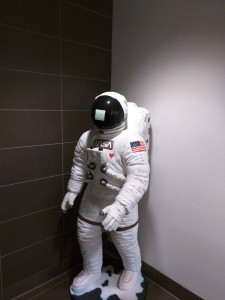Summary: If you’ve ever wondered why an astronaut’s helmet has the appearance it does, read on.
Astronauts have some of the coolest looking gear, but all of that gear serves a life saving purpose. Think of the helmet like a self contained bubble, where the astronaut can breathe and function thanks to several systems designed to support life. Even the mirrored visor, manufactured with optical coating systems, is designed with more in mind than just “looking flash.” Read on to get a rundown of the astronaut’s helmet and other gear.
Oxygen and Life Support
A crucial component to any astronaut’s helmet is the ability to breathe, which is directed through what is known as a “vent pad.” These pads help direct oxygen, and pressurize the suit. That’s part of the reason why the helmet resembles a clear-plastic bubble. That is until you apply the mirror visor.
Optics
Using e-beam evaporation, a mirror sheen is applied to the lens of an astronaut’s helmet. Like UV resistant eyewear, this visor is a crucial guard against direct sunlight. Outside of an atmosphere with little to filter the light, long term exposure can be very damaging. The visor’s tint also helps reduce heat buildup in the suit, just like the tinting on the windows of a car. Mirror sheen coatings can reduce the amount of light by up to 50%, which is a huge benefit to the eyes when exposed to direct sunlight long term.
Of course, the visor also serves the very practical purpose of protecting the astronaut’s face from small objects near the face, like tools or garbage.
Bio: Denton Vacuum, LLC manufactures a thermal evaporation system with a wide range of applications in aerospace, medical and other forms of advanced manufacturing.
